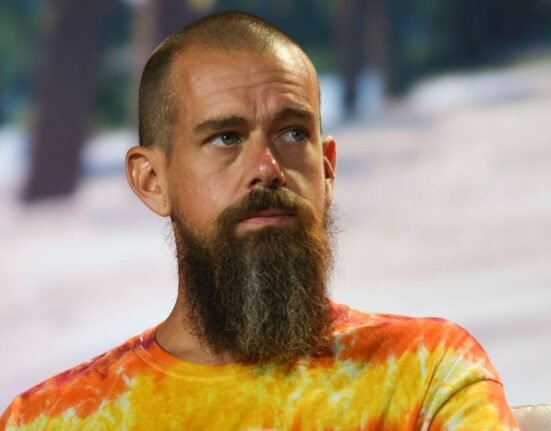For Seba P A, 26, from Kerala, the cost of breathing easy, moving around and enduring fewer bouts of infection comes at a steep price — nearly Rs 18 lakh per month. For long, she had managed with the Rs 50 lakh government grant under the national policy of rare diseases, one of which — Spinal Muscular Atrophy — she is battling. Now she is on a crusade to make life-saving drugs, currently under patents, affordable for persons suffering from rare diseases.
Suffering from Spinal Muscular Atrophy (SMA), a rare disease that progressively affects muscle functions, her condition can be managed with Risdiplam. Developed by Swiss pharma giant Roche, one bottle of Risdiplam costs around Rs 6 lakh in India — something her taxi driver father cannot afford.
In a bid to make the life-altering medicine affordable for SMA patients like herself, Seba had in December 2023 filed a petition in the Kerala High Court urging the government to invoke the compulsory licensing clause under Section 84 of the Indian Patents Act, 1970. This allows the Indian government to grant someone other than the patent holder the right to make the medicine if a product or process is nationally unavailable or overpriced. Roche holds the patent for Risdiplam till May 2035.
Her case is now being heard in the Supreme Court. “If other companies start manufacturing the drug, the prices are likely to plummet,” says Seba. Like her, patients suffering from rare diseases, who need life-long therapy, have been urging the government to invoke the compulsory licensing clause.
WHY PATIENTS OF RARE DISEASES RAN OUT OF OPTIONS
Two years ago, Seba’s family had applied for financial aid under the Centre’s National Policy for Rare Diseases, 2021, which had identified 1,000 patients, including Seba, for a one-time financial assistance of Rs 50 lakh each.
“When I was taking Risdiplam, my health was stable. I was able to speak and sing. However, the funds got exhausted in mid-February. Since then, I have already had two bouts of infections and have been confined to bed,” Seba, who loves singing and painting, tells The Indian Express.
Though she is back on Risdiplam, being provided by Roche free of cost for a year while the case is on, it continues to be out of reach to other SMA patients.
Story continues below this ad
The mother of a 14-year-old boy from Bengaluru has been struggling to obtain medicine to treat his cystic fibrosis (CF), a genetic condition that affects cells that produce mucus, sweat and digestive juices, making them thick and sticky, clogging up lungs and the digestive system. In 2019, Trikafta, a three-drug combination sold by US-based Vertex, was approved by the US Food and Drug Administration (FDA) for CF treatment.
“Importing a three-month supply costs Rs 70 lakh. An Argentina company manufactures a slightly cheaper version that costs around Rs 21 lakh for a three-month supply,” she says. She is one of the petitioners urging the government to grant a compulsory license for the medicine.
In an attempt to get the medicine from Argentina, the mother scours Facebook for Indians living there and requests them to get the medicine when they come home. “I split the tablets to make them last at least six months. If Indian companies are given compulsory licences, I might be able to afford medicines for my son,” she says.
WHAT’S THE STATUS OF COMPULSORY LICENSING CLAUSE?
Despite the exorbitant cost of drugs used to manage rare diseases, India’s compulsory licensing clause has been used just once in 20 years. “Only one private company got a compulsory license once,” says Anand Grover, a senior lawyer who works on such patent cases, referring to the New Delhi-based Natco Pharma, which secured the permit to manufacture Nexavar, a cancer drug made by German multinational Bayer, in 2012.
Story continues below this ad
Since then, three Indian companies have unsuccessfully applied for compulsory licences — BDR Pharmaceuticals for Dasatinib (for leukemia), Lee Pharma for Sitagliptin (for diabetes), and Emcure Pharmaceuticals for Trastuzumab (for breast cancer), says Sneha Sharma, a partner at Sujata Chaudhri IP Attorneys.
ROCHE VS NATCO
In 2024, Roche Pharmaceuticals had filed a petition to get an injunction, claiming that Natco Pharmaceutical was in the process of launching a generic version of Risdiplam. Though its injunction was denied by the Delhi High Court in March 2025, the Swiss drug-maker has filed an appeal. The Division Bench has heard the arguments in the case and is now awaiting written statements from both parties.
Meanwhile, Natco announced that if it is allowed to manufacture and market the generic version of Risdiplam, it will sell it for just Rs 15,900 per bottle (against Roche’s Rs 6 lakh per bottle). Though Roche’s assistance programme provides five bottles at the cost of two, patients still end up spending nearly Rs 30 lakh annually. A generic version of Risdiplam would mean that the government’s Rs 50-lakh aid will last almost nine years instead of just a few months for SMA patients.
Risdiplam is sold for around $500 (around Rs 42,000) per bottle in China and Pakistan. “Risdiplam costs less in China and Pakistan where prices were negotiated with the company. Since that did not happen in India, a simple solution would be to issue a compulsory license to Natco,” says Grover.
Story continues below this ad
He also challenged the narrative put forth by the Swiss drug-maker, which said that a drug’s exorbitant prices were meant to cover the “high costs” of research and development (R & D). In its suit against Natco, Roche had said that it takes a company nearly 10-15 years and an estimated $2.6 billion (nearly Rs 260 crore) to bring a successful drug to the market. The company had claimed that only one in nearly 5,000 or 10,000 drugs in the research pipeline and around 12% of those in clinical trials get approved.
“Many drugs are, in fact, developed by smaller companies that are acquired by bigger ones and taken to clinical trials. Big companies often hold these patents despite not bearing initial costs of developing several candidate drugs. The figures these companies have been giving out for years are an exaggeration. Which is why we ask for actual costs the companies incur on drug R & D,” says Grover.
He says studies have shown that the cost of developing Risdiplam would, at most, be $150 million, a figure that has not yet been contested by the company.
HOW PHARMA MAJORS PROLONG PATENT CONTROL
Pharma giants find loopholes to prolong their control over a drug. When it comes to Trikafta, the CF drug, Vertex Pharmaceuticals already holds the patent for two of these medicines in India while an application for the third is in process. “In a blatant abuse of its monopoly, Vertex has filed and obtained multiple patents in India, thus having monopoly rights on various CFTR modulators (a class of medications designed for individuals with CF). But it has not bothered to register the medicine in India,” states a 2024 petition by CF patients in the Karnataka High Court.
Story continues below this ad
Sharma says a compulsory licence may also be issued if a patent holder has not worked the patent in over three years.
PATENTING PHARMACEUTICALS IN INDIA
When the country’s new patent law was brought out in the 1970s, the government created a very important provision — it allowed for only process patenting when it came to pharmaceuticals. “After the British left, drugs in India were very costly. A committee set up by (then PM) Mrs (Indira) Gandhi recommended dropping product patenting for pharmaceuticals. If a product is patented, you cannot do anything. But if a process is patented, you can legally make a similar drug using another process. That is what was done under the new Patent Act that came into force in 1972,” says Grover.
This decision was key to the generic manufacturing of pharmaceuticals in India, earning the country the moniker of the “pharmacy of the world.”
Meanwhile, the US, which wanted to create a monopoly for itself, forced the world to accept the Trade-Related Aspects of Intellectual Property Rights (TRIPS) Agreement, which came into effect on January 1, 1995. While countries like Brazil, Mexico and India initially formed a block against TRIPS, threats of sanctions forced them to toe the line.
Story continues below this ad
India was given time till 2005 to implement provisions similar to the ones in the US — ensuring product patents and extending patent period from seven to 20 years, explains Grover. In fact, India’s Patent Act, which allowed only the process to be patented, became the reason why Indian drug-maker Cipla could establish itself as the “Robin Hood” of pharmaceuticals. In 2001, the company started selling a cocktail of antiretrovirals (medicines used to manage HIV) for less than $1 a day, driving down the prices of the medication across the world.
Grover says, “(Despite TRIPS), we still tried to maintain some provisions that would help our people. Our law does not allow extending patents simply by changing the medicine’s form or replacing some salts (a process called ever-greening of patents) unless there is a significant change in its efficacy. Our law also allows for both pre and post-grant opposition.”









